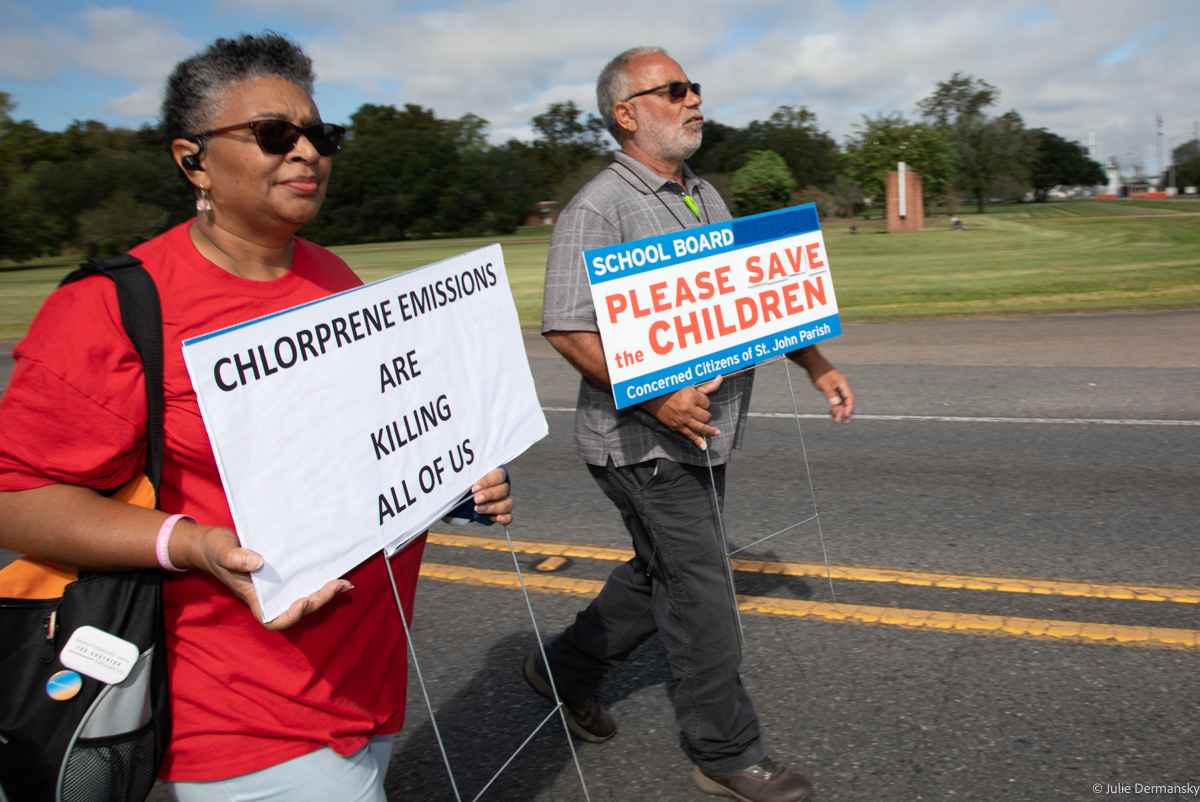The Environmental Protection Agency’s Administrator Michael Regan announced a new proposed rule to govern toxic chemical air emissions at an April 6 press conference choreographed to have the Denka Performance Elastomer Plant, a synthetic rubber manufacturing facility in St. John the Baptist Parish, Louisiana, as a backdrop.
The Denka plant is located next to the Mississippi River in the middle of an 85-mile stretch between Baton Rouge and New Orleans lined with chemical plants and refineries that President Joe Biden referred to as “Cancer Alley” when he rolled out his environmental policy, is one of many that will be subjected to new regulations included in the proposed rule, if it is finalized and enacted.
Members of the Concerned Citizens of St. John the Baptist Parish stood next to Regan as he explained the far reach the prosed rule was designed to have. The community group was borne out of the fear of breathing toxic air after learning in 2016 that the EPA’s National Air Toxics Assessment identified their community as having the highest risk of cancer from airborne chemicals in the country.
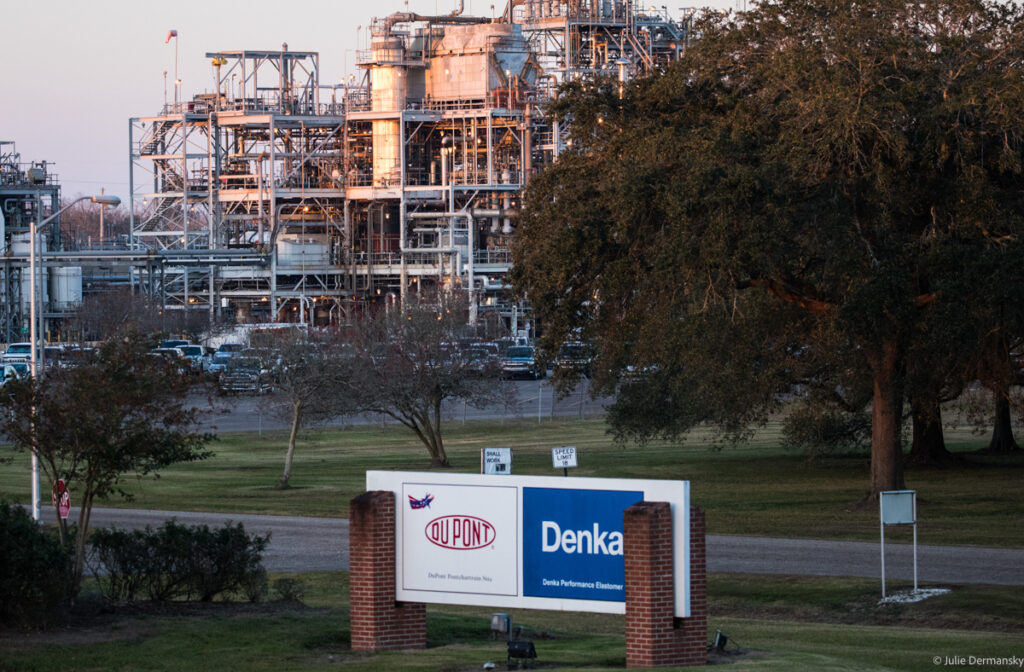
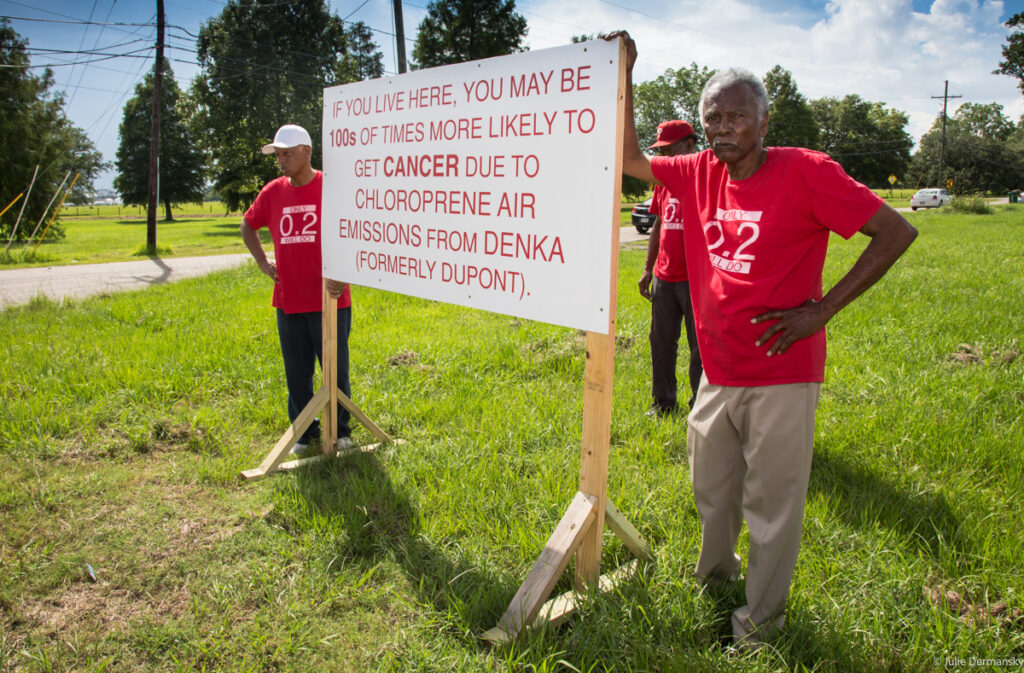
Regan reflected on his first visit to the community in November 2021 on his “Journey to Justice” tour. He recounted the realization he had while visiting Fifth Ward Elementary School “a stone’s throw away” from the a manufacturing facility, where the “Black students who attend that school, who study at the school, who eat lunch at that school every single day, who breathe toxins from the Denka plant,” look just like his 8-year-old son. He also recalled how nearly every person he spoke with who lives near the school told him that they knew someone who suffered from an illness that they believe is connected to the pollution in the air they breathe.
He said the experience of meeting residents and seeing the impact of long-term chemical exposures to a fence-line community cemented his team’s commitment to environmental justice. Regan asserted that the proposed rule, along with other recent actions the agency has taken under his leadership, illustrate that he has honored the commitment he made to the community during his first visit.
The new proposed rule includes standards for chloroprene and ethylene oxide, two chemicals that the EPA reclassified as being likely human carcinogens that are part of the polymer resin group. The community next to the Denka plant has the dubious distinction of being the only one in the nation that is exposed to both chemicals.

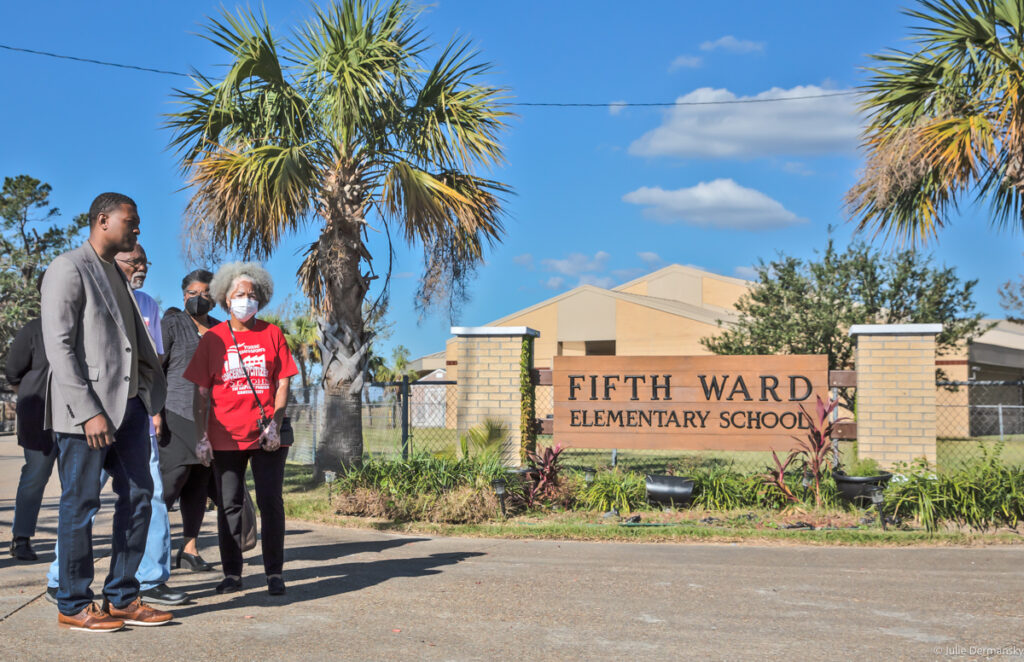
Regan explained that, if enacted, the new proposed rule would reduce emissions of highly toxic chemicals by more than 6,000 tons each year, and would greatly decrease exposure for fenceline communities across the country.
Measures that are part of the proposed rule strengthen and update some existing regulations that apply to chemical plants. It also requires facilities to conduct fence-line monitoring for six key air pollutants that are known or suspected to cause cancer in humans, including chloroprene, benzene, ethylene oxide, and vinyl chloride — the chemical that was released in February in East Palestine, Ohio, when a Norfolk Southern train derailed.
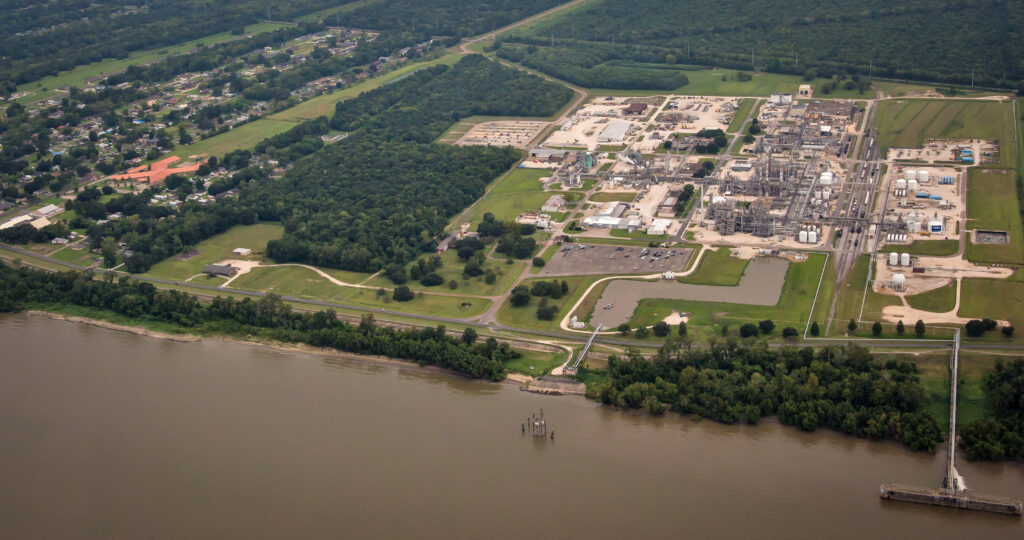
Members of the Concerned Citizens of St. John continued to praise Regan’s job performance since he met with them and walked the streets of their neighborhood in November 2021 — despite fact that they and the children at Fifth Ward Elementary School continue to be exposed to chloroprene emissions that exceed the EPA’s recommended threshold.
They hope the administrator can do more to protect the children at the elementary school, above and beyond recommending that the Louisiana Department of Environmental Quality (LDEQ) and the state’s Board of Health encourage the St. John the Baptist School Board to relocate the children from Fifth Ward Elementary School. Last October, the EPA sent both agencies a 56-page letter that notified them it has begun a preliminary investigation in response to a complaint made by the Concerned Citizens of St. John and other environmental advocacy organizations. The complaint alleges that LDEQ and the state Board of Health are in violation of Title VI of the 1964 Civil Rights Act in their dealings with minority fence-line communities in Cancer Alley, and the EPA’s letter indicated that it has merit.
The actions taken by the EPA on behalf of the community in St. John the Baptist Parish, are tied to a consent decree the agency agreed to last August in order to settle two separate legal actions that the Concerned Citizens and other environmental advocacy groups took against it.
The agency’s announcement of its proposed rule comes just a short time after a March 31 deadline mandated by the consent decree that required the agency to propose a rule for chloroprene and ethylene oxide, and follow up with a finalized rule by March of 2024. Though the EPA had planned to set proposed rules for both chemicals before agreeing to the consent decree, the rule-making process for chemicals typically drags out for several years.
When asked how long it might take for new rules to be put into place, EPA spokesperson Shayla Powell said in an email to DeSmog, “Fenceline monitoring would have to begin at most facilities within one year after the rule is final. Most facilities would have two years after the rule is final to meet requirements for [ethylene oxide] and chloroprene; and three years to meet requirements that resulted from EPA’s technology review.” Powell added that the agency “cannot speculate” on how legal challenges might delay that timeline.
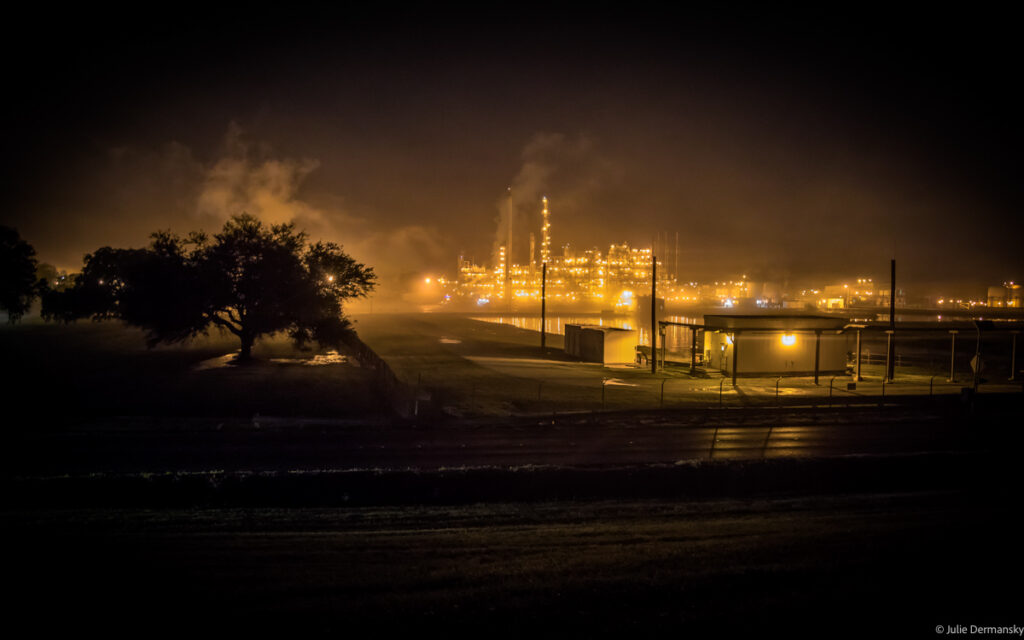
In an interview from the day of the press conference, NBC’s Cynthia McFadden asked Regan, “Why not shut the plant down?” while the rule is worked out and current legal challenges filed by the Department of Justice on behalf of the EPA against Denka and DuPont move forward.
“We are using every tool in our tool box” Regan replied. “If I had more powers, trust me, I would use them,” he told her.
But Wilma Subra, a chemist who has been working with the Concerned Citizens as a technical advisor since its inception in 2016, and Retired Lt. General Russel Honoré, the founder of Green Army, a coalition of environmental groups and concerned citizens fighting against pollution in Louisiana, disagree.
They assert that the EPA does have the power to shut down the plant. When the EPA had the DOJ file a complaint against Denka earlier this year, it cited an emergency power granted by Section 303 of the Clean Air Act that not only empowers the agency to take legal action, but also to use its authority to address risks before they cause harm. This includes the ability to stop a facility from operating for at least 60 days while others measures are being considered if the EPA deems its emissions to be an imminent and substantial endangerment to the public health or the welfare of the environment.
Powell, the EPA spokesperson, did not directly answer a question from DeSmog asking whether closing down Denka’s plant is one of the tools in the EPA’s toolbox. Instead, she wrote that “the United States filed a motion for a preliminary injunction in the Clean Air Act enforcement case, asking the court to immediately require Denka to significantly cut its pollution. The United States also asked the Court to order Denka to cease production if the company does not comply with the specific requested air pollution reducing actions.”
In an earlier interview with NBC, Deena Tumeh, an Earthjustice attorney who has been working with residents in the area, pointed out that these EPA motions could take years to resolve, adding that “The EPA has decided not to act fast enough to protect this community.”
“The EPA is opinionating, not regulating,” Honoré said on a call following the press conference. “Based on the analysis of the impact of the air on people, this should be an emergency. Those kids [at Fifth Ward Elementary] should be moved, and the company should be held accountable.”
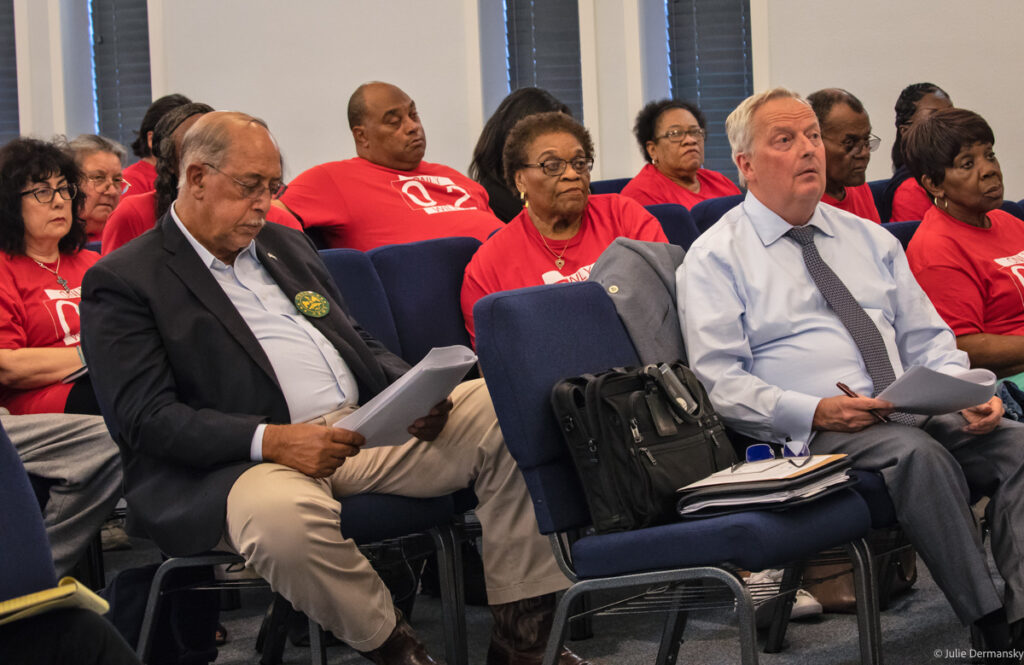
In Honoré’s view, state and federal regulators are continuing to fail to protect the community in St. John the Baptist Parish by not requiring Denka to cut production or shut down until it is able to make changes that would ensure it could operate without emitting chloroprene above the EPA’s recommended safe level of 0.2 micrograms per cubic meter of air.
Honoré believes that regulators letting the company emit chloroprene at levels exceeding the threshold set to prevent a cancer risk — after reclassifying the chemical as a likely human carcinogen in 2010 — show that both parties are beholden to the chemical industry. Under both the Trump and Biden administrations, EPA leadership has failed to use all the tools in its tool box to protect the community. The fact that the agency has acknowledged children under 16 are more vulnerable to chloroprene emissions than adults, and yet action from the state and federal government has still fallen short of protecting the community, troubles him deeply.
Denka has repeatedly challenged the EPA’s reclassification of chloroprene as a likely human carcinogen and the regulator’s recommended standard of 0.2 micrograms per cubic meter of air. In 2017, the company voluntarily entered into a consent decree with state and federal regulators to lower its chloroprene emissions by up to 85 percent. However, these measures fell short of hitting the EPA’s recommend 0.2 standard.
“The company continues to believe all credible scientific evidence on health outcomes in St. John the Baptist Parish and on chloroprene in other parts of the world clearly show DPE’s operations do not contribute to increased risk of health impacts in nearby areas,” David LaPlante, a Denka spokesperson, wrote in an email.
Denka took legal action against the EPA in January this year, filing a suit over “politically driven” air pollution rules, before the DOJ countered with its own legal actions against Denka and DuPont, which owns the land the plant sits on.
Even if the EPA’s new proposed rule for toxic chemicals is finalized a year from now, it will undoubtably face legal challenges from the chemical industry and many of the companies the rules will govern. It is unclear if the EPA will use its power to force companies to comply after the rule is finalized before any legal challenges related to the rule are settled. So, even if the rule is enacted, the timeline for Denka and others to make required changes to their operations to comply with it is uncertain. Furthermore, if the next administration, wants to overturn rules set by previous ones, it has the power to do so.
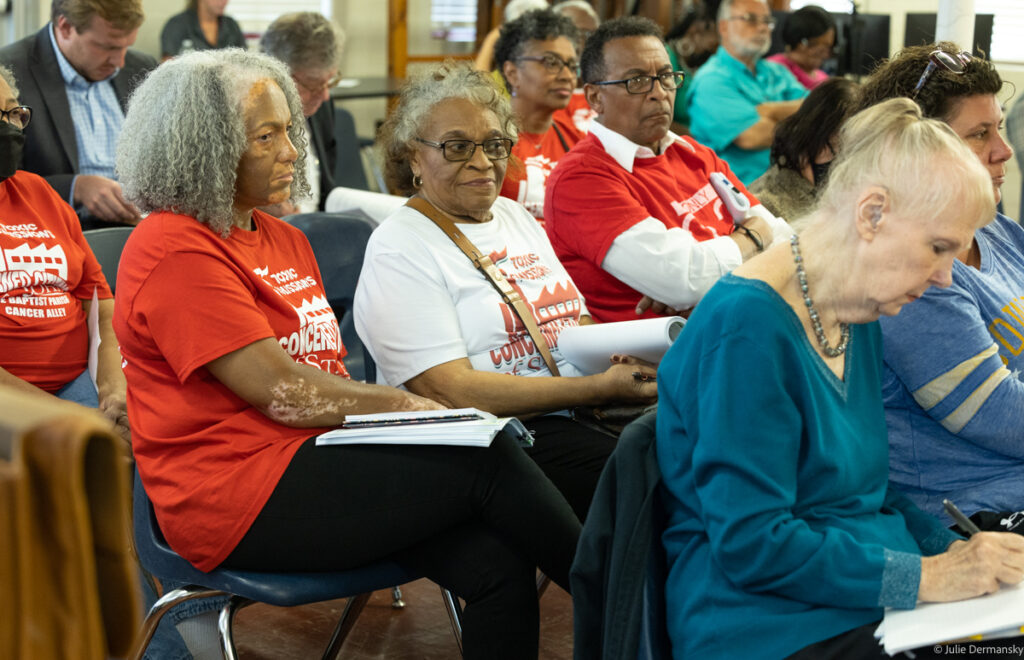
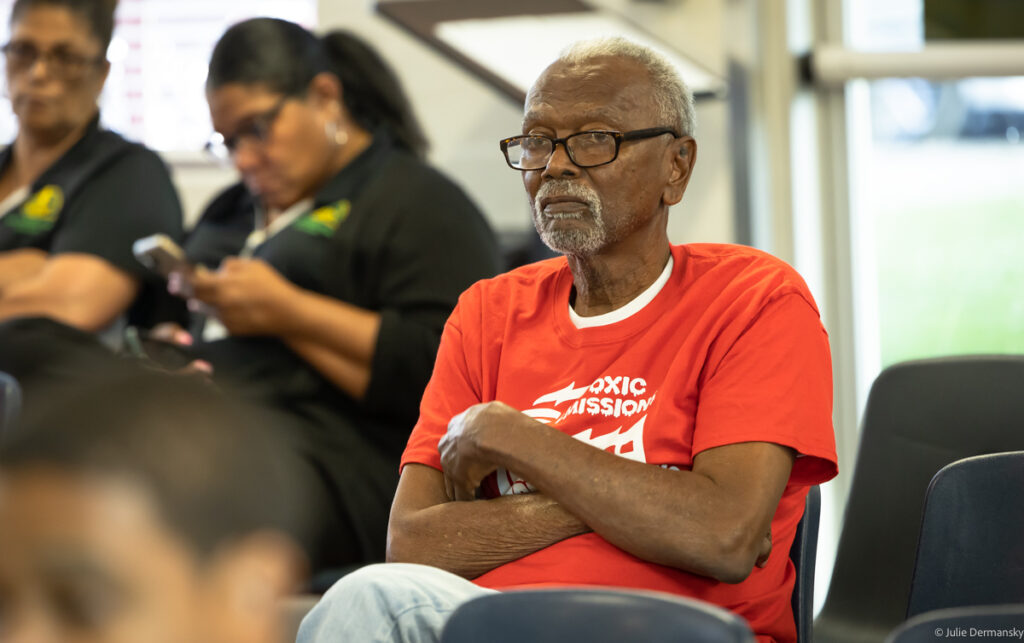
Prior to Regan’s April 6 visit, at the March 28 St. John the Baptist School Board meeting, Robert Taylor, the founder of the Concerned Citizens, and other members of the group, were outraged to learn the board has not made plans to relocate the children from Fifth Ward Elementary. They were also outraged that all but board member Raydel Morris, who represents the district that the school is in, denied knowing that the children are at an increased risk of cancer due to the chloroprene emissions.
Morris invited Adrienne Katner, program director and associate professor for Environmental and Occupational Health at LSU-Health School of Public Health, to make a presentation about the health risks the children are being subjected to by keeping the school open, and gave her the opportunity to bring with her an additional expert.
Katner cited a 2021 study she did for the NAACP about the environmental conditions in St. John the Baptist Parish schools, which highlights how toxic industrial emissions can trigger a number of illnesses and adverse health events.
“Children are more susceptible to mutagens because they are growing rapidly, leaving less time to repair the DNA, and allowing for quicker replication of cells,” Katner pointed out.
After Katner wrapped up her presentation, members of the board tried to prevent Wilma Subra, the expert she opted to bring with, her from speaking due to a minor infraction in the board’s procedural rules. Morris stepped in and ensured Subra was able to make a presentation. When she was finished, despite board members’ declarations that this was the first they were hearing about the health risks the children at Fifth Ward Elementary School face, none of them asked Subra questions.
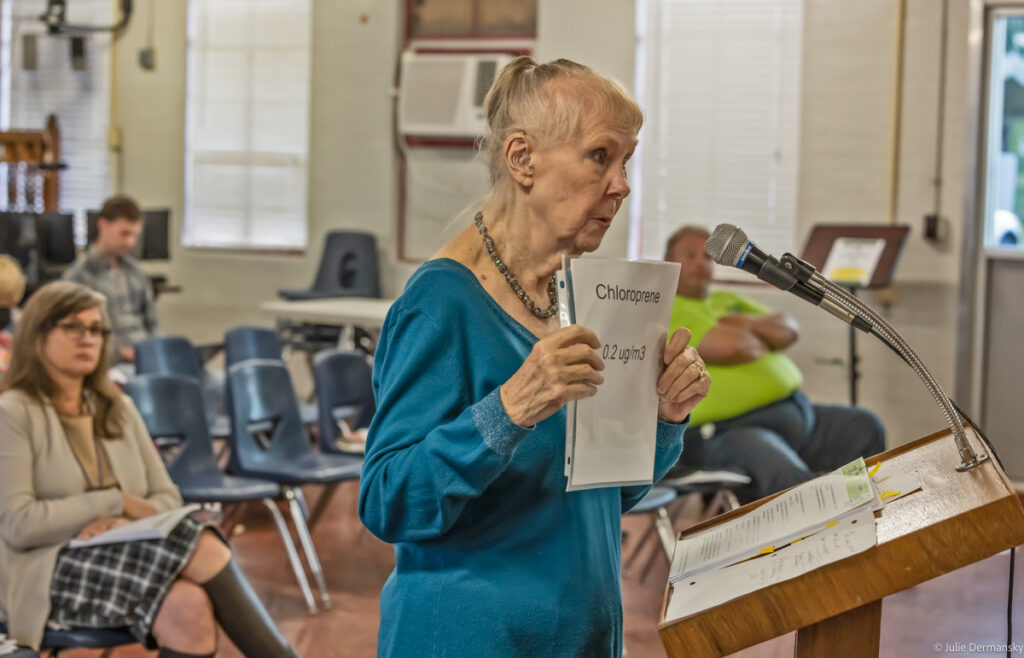
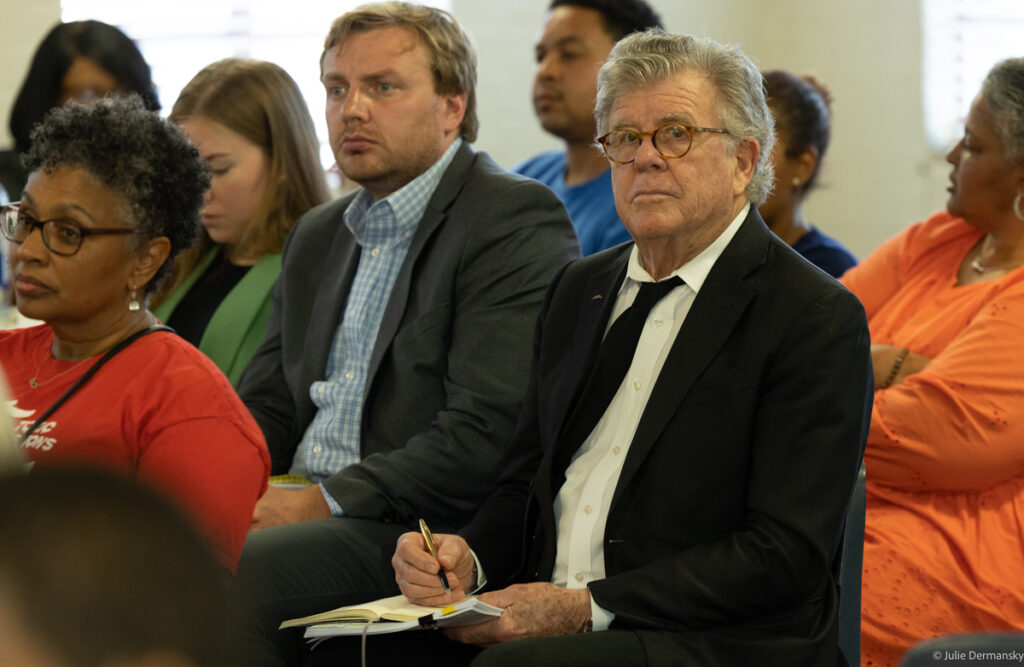
During a public comment period at the meeting before Katner and Subra’s presentation, Hugh “Skip” Lambert, one of the lawyers involved in a class-action lawsuit against DuPont and Denka on behalf of residents who live near the plant, also pleaded with the board to relocate the students to protect their health.
Lambert, Subra, and some of the members of the citizens group who attended the March 28 meeting told me afterward that they do not think it is credible that any of the school board members are unaware that the children attending Fifth Ward Elementary School are at an elevated risk of cancer. Some of the current board members were on the board in 2018 when Lambert, Subra, and others spoke to the community at an informational meeting in LaPlace. Also, the group’s relentless advocacy work fighting for clean air since 2016 has been covered repeatedly by numerous news outlets around the world.
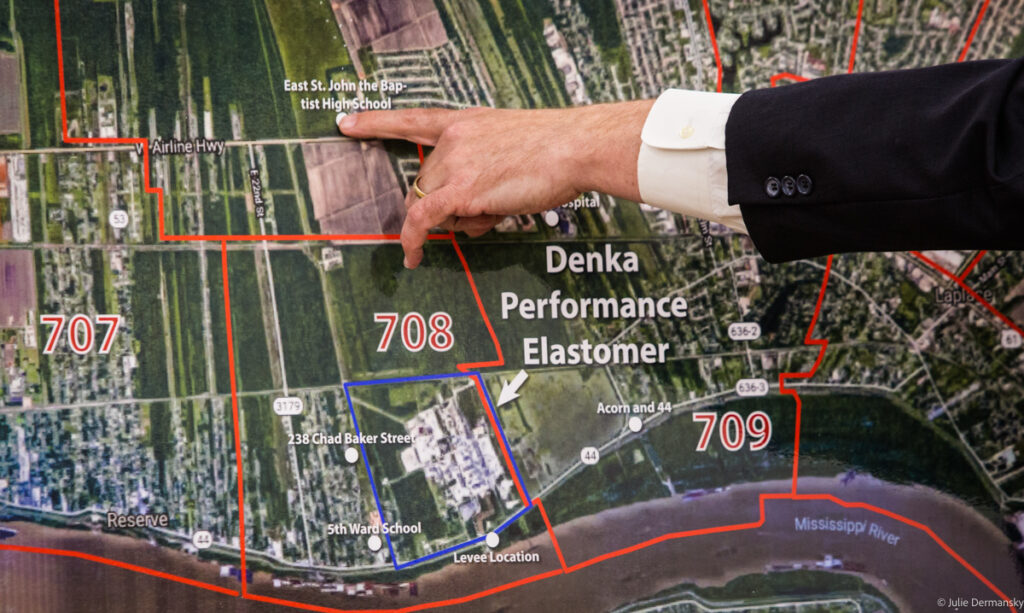

“Every day that the children have to breath chloroprene emissions above 0.2 at school, is one day too many,” Taylor told me following the March 28 school board meeting. Although he remains frustrated by the school board, which holds the power to relocated the children, he doesn’t hold Regan responsible for the school board’s lack of action. Regan’s return visit on April 6 renewed his hope that the EPA will help the community safeguard its children.
Subscribe to our newsletter
Stay up to date with DeSmog news and alerts


